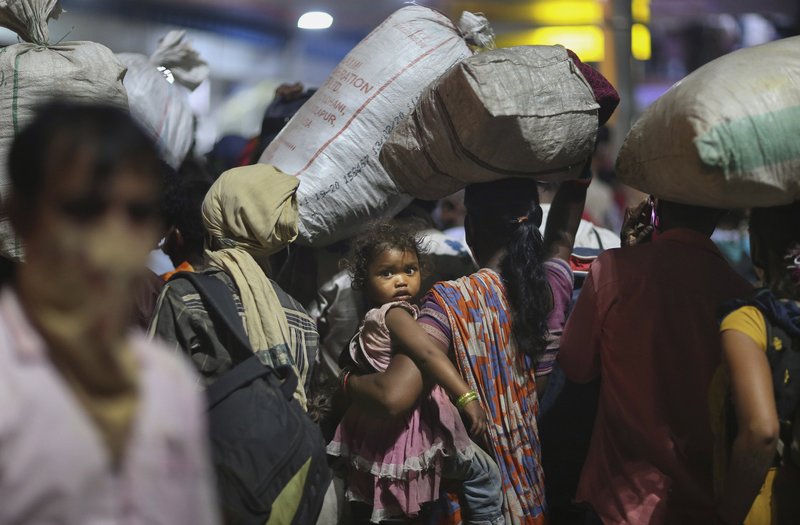
File photo: Migrant workers line up to board trains to their home states at a railway station in Hyderabad, India, May 23, 2020. /AP
File photo: Migrant workers line up to board trains to their home states at a railway station in Hyderabad, India, May 23, 2020. /AP
The "World Migration Report 2020" published on Tuesday estimates that there were around 272 million international migrants in the world in 2019, among which nearly two-thirds are labor migrants. The launch seminar of the report focused on the dynamics between the pandemic and migration as COVID-19 has immobilized the world, leaving tens of millions of migrants facing unemployment and even deportation.
The report launched by the International Organization for Migration (IOM) and the Center for China and Globalization (CCG) provides the latest account of migration globally. With numerous restriction orders introduced by different administrations due to the coronavirus pandemic this year, migrants and related organizations are confronted with new challenges in different countries.
The coronavirus has been devastating to migrant workers in the United Arab Emirates (UAE). Based in Dubai, Emirates Airline, the biggest flag carrier in the middle east, told the Economist that it may cut 30 percent of its roughly 100,000 staff across categories. And nearly all of those losing their jobs in the UAE are migrants as they represent 88 percent of the population.
Migrant workers without a job will have to leave the country. Some 500,000 Indians in the UAE have registered to be evacuated and nearly half of them have been.
Some of the immigrants are leaving the gulf country with debt owning to the labor brokers who brought them across the border in the first place.
UAE is the country with highest proportion of international migrants, and the second top remittance-sending country in the world, according to the report. With the massive lay-out, the remittance flow from UAE to other poorer countries can be affected significantly.
The World Bank predicts the global remittance flows will fall by 20 percent this year.

Infographic from World Migration Report 2020 /IOM
Infographic from World Migration Report 2020 /IOM
India has been receiving billions of dollars of remittances each year, the report says, as it continues to be the largest country of origin of international migrants with 17.5 million people living abroad.
The lay-off in UAE means many were left jobless and even homeless. Desperate and despairing, they beseeched the Indian government to find them a way home, but so far, several months later, only 878,000 Indians have been repatriated through the Vande Bharat mission.
S Irudaya Rajan, chair professor of the Ministry of Overseas Indian Affairs research unit on international migration, predicted that between two to three million Indians will be back this year.
It's unfortunate that no government has considered the plight of these migrants or their families. "There hasn't been a single word about rehabilitation," Rajan told Scroll. "They're not doing much for domestic migrants either…These people really require our support."
In another state where 1.4 million migrant workers lives in, Singapore reported new COVID-19 cases on Wednesday at migrant worker dormitories, where major breakouts happened in April.
Since the under-noticed coronavirus cases being reported in the cramped dormitories for migration workers, the government has been taking swift actions of massive tests for migrant workers.
The testing was completed on August 7, and the Ministry of Manpower (MOM) declared all dormitories "cleared of COVID-19" on August 19 but urged continued vigilance.
However, new COVID-19 cases are still being reported at migrant worker dormitories as a result of routine testing.
On Wednesday, Singapore's Minister for Manpower Josephine Teo said these cases are surfacing as "part of the plan."
"We have planned for every single one in the construction, marine and process sector, as well as the people who come into close contact with them, to be regularly tested. So, the findings today are a result of those testing," Teo said.